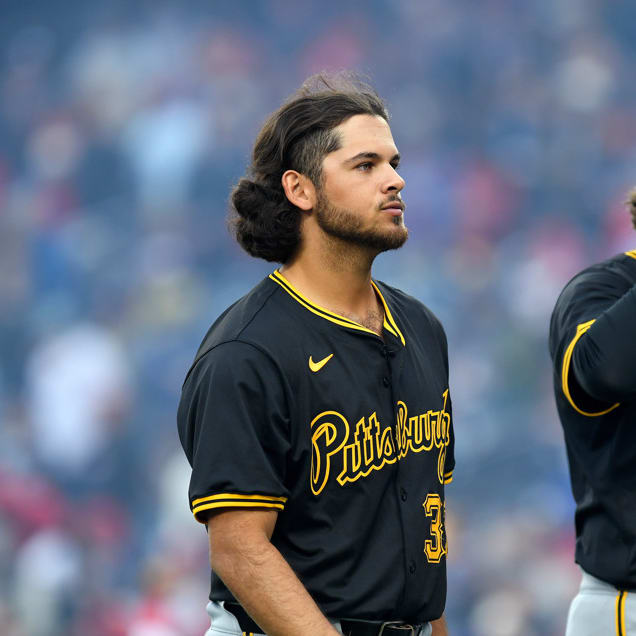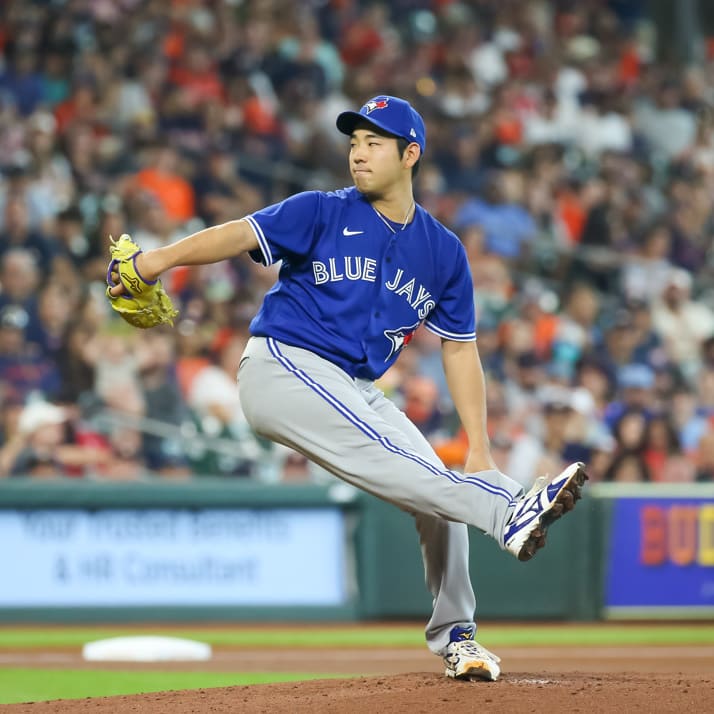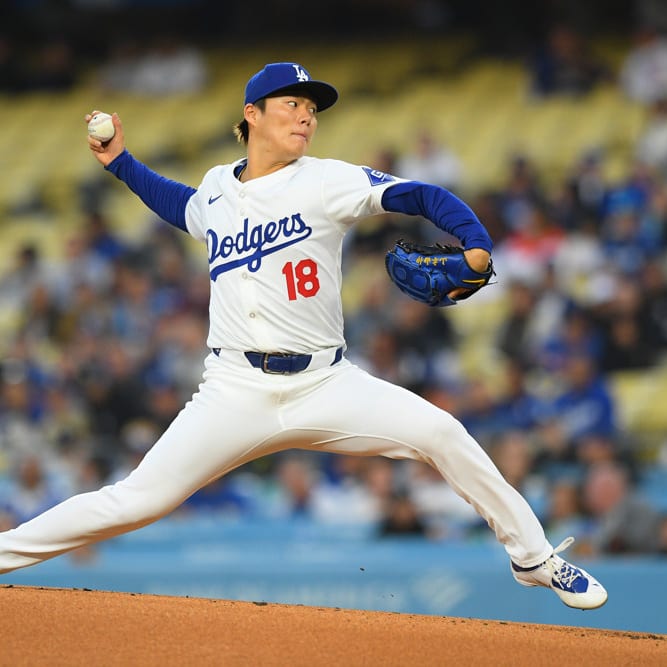This article is part of our MLB Team Previews series.
Just when you thought it couldn't get any worse in Houston, it did. For the first time in team history, the Astros lost more than a 100 games, blasting into the triple digits with a whopping 106 losses, becoming the first major league team to lose 106 or more games since the 2005 Royals.
Off the field, the franchise was preparing for new ownership. It took almost a year and a concession to move the team to the American League to complete the sale of the Astros to Jim Crane. With the new owner's consent, the team continued to shed payroll, dealing Hunter Pence and Michael Bourn at the end of July - but even with the moves, there is a lot more rebuilding to do. The team has almost $50M committed to Carlos Lee, Brett Myers, Wandy Rodriguez and Brandon Lyon. Unfortunately for Crane, it's doubtful that these guys will bring back top prospects, even if Houston eats sizable chunks of their salaries.
The key to the 2012 season for the Astros will be taking the necessary steps to become a competitive team in 2015. For starters, the Houston front office must to do a better job scouting talent, as it is doubtful (for example) that their 2009 and 2010 first-round picks (Jiovanni Mier and Delino DeShields, Jr.) will ever live up to their expectations. The Astros had a decent draft last year, and are going to need to have a bunch more of
Just when you thought it couldn't get any worse in Houston, it did. For the first time in team history, the Astros lost more than a 100 games, blasting into the triple digits with a whopping 106 losses, becoming the first major league team to lose 106 or more games since the 2005 Royals.
Off the field, the franchise was preparing for new ownership. It took almost a year and a concession to move the team to the American League to complete the sale of the Astros to Jim Crane. With the new owner's consent, the team continued to shed payroll, dealing Hunter Pence and Michael Bourn at the end of July - but even with the moves, there is a lot more rebuilding to do. The team has almost $50M committed to Carlos Lee, Brett Myers, Wandy Rodriguez and Brandon Lyon. Unfortunately for Crane, it's doubtful that these guys will bring back top prospects, even if Houston eats sizable chunks of their salaries.
The key to the 2012 season for the Astros will be taking the necessary steps to become a competitive team in 2015. For starters, the Houston front office must to do a better job scouting talent, as it is doubtful (for example) that their 2009 and 2010 first-round picks (Jiovanni Mier and Delino DeShields, Jr.) will ever live up to their expectations. The Astros had a decent draft last year, and are going to need to have a bunch more of them to rebuild a farm system that ranks in the bottom third of MLB systems.
Offseason Moves:
Activated C Jason Castro from the 60-Day disabled list.
Just when it finally looked like Castro was going to get that chance to prove himself as a starter, he tore his ACL and missed all of the 2011 season. He managed to heal in time to make an appearance in the Arizona Fall League, where he posted a .289/.404/.316 line over 12 games. Presumably, he was going to head to spring training with no workload restrictions, but injuries struck again (Castro had surgery on his left foot in December and will miss three months). It's the same type of injury that Jeff Keppinger was slowed by last year, and right now Castro's availability for the start of the season is in question.
Traded RHP Mark Melancon to the Red Sox for SS Jed Lowrie and RHP Kyle Weiland.
An injury to Brandon Lyon opened the door for Melancon to take over the closing duties. Melancon responded to the opportunity with a strong 2.78 ERA and 1.224 WHIP, while racking up eight wins and 20 saves. The Astros opted to sell high, trading Melancon to the Red Sox in December, where he'll set up for Andrew Bailey. Lowrie, who the Astros acquired, was stuck behind Dustin Pedroia and Marco Scutaro with the Red Sox. The trade opens up the possibility of 500-plus at-bats for the infielder in Houston, where he's a clear upgrade for the rebuilding squad and their dire shortstop situation.
Claimed Fernando Martinez off waivers from the Mets.
It feels like we have been talking about Fernando Martinez for decades, but he is still just 23, signing with New York as a 16-year-old. Injuries have been the story with Martinez: first an elbow strain, then a hamstring injury, then a right knee injury. The Mets opted to part ways with Martinez in order to clear a 40-man roster spot. Leg injuries have sapped some of his speed, and while he is solid defensively and can handle either corner, he is no longer a center fielder. Still, Martinez gets a fresh start in Houston. Martinez needs to remain on Houston's 40-man roster, but figures to open the season in Triple-A as he can be optioned in spring training if he does not make the major league club.
Signed free agent RF Jack Cust.
Getting out of Oakland and Seattle should figure to help Cust, whose power has been on a steady decline for the last few years. While there are questions as to whether he has anything left in the tank, Cust will still retain some marginal value in OBP-based leagues. The Astros have a club option on Cust for 2013, so perhaps someone in the front office is thinking about the move to the AL (Cust is not really much of a "fielder"). For now, the one-time slugger aims to get his career back on track with his fourth team in two years.
Signed free agent C Chris Snyder.
2011 was a lost season for Snyder, who spent a good chunk of the year on the 60-day DL nursing a sore back. Provided he's healthy, there's no reason he can't go back to hitting between 10-15 homers with a .230 batting average or so - but back injuries can be tricky to recover from, if not career threatening. If he proves healthy, Snyder has a good chance to supplant either Jason Castro or Humberto Quintero as one of the two catchers carried on the major league roster for the Astros in 2012.
Signed RHP Livan Hernandez to a minor league deal.
Hernandez logged 175.1 innings for the Nationals and pitched better than his ERA would indicate. His 3.96 FIP was almost identical to his 2010 rate (3.95), and his xFIP of 4.28 was his lowest since 2003. This success could have come from a change in his pitching approach. For the first time in his career, Hernandez threw his fastball, which averaged 83.9 mph in 2011, less than 50 percent of the time and used his change-up, slider and slow curveball more frequently. This resulted in his highest swinging strike rate since 2005. He is best suited to remain in the National League, and he could be a good innings eater in the back of the rotation that should produce a similar ERA in 2012.
Projected Lineup
1. Jordan Schafer, CF
2. Jose Altuve, 2B
3. J.D. Martinez, LF
4. Carlos Lee, 1B
5. Brian Bogusevic, RF
6. Jed Lowrie, SS
7. Jimmy Paredes, 3B
8. Jason Castro, C
Looking at this lineup, it's amazing just how much turnover there has been since 2011. Gone are Michael Bourn, Clint Barmes, Hunter Pence, and Bill Hall and in are Jordan Schafer, Jose Altuve, J.D. Martinez and Jed Lowrie.Noticeably missing from the starting nine are two guys the Astros thought they would be building around in Chris Johnson and Brett Wallace. It's clear to even the casual observer that the Astros are still trying to find that winning combination. While they certainly got younger, it's not evident that this is that "future team" that can compete in an A.L. West where the Rangers and Angels are adding players like Albert Pujols and Yu Darvish.
Projected Rotation
1. Brett Myers
2. Wandy Rodriguez
3. Bud Norris
4. J.A. Happ
5. Henry Sosa/Livan Hernandez
Like 2011, the Astros will open up 2012 with Myers and Rodriguez at the top of their rotation. Norris, who took that big step forward in '11 like we predicted he would, may find himself as the anchor of the staff if the Astros' front office is able to move the two guys ahead of him. This doesn't bode well for some of his counting stats, as not only will he be on a rebuilding team, he will also be going up against the aces of the NL Central. Sosa is probably the most surprising name in the rotation -- he throws hard, with his fastball topping out around 96 mph, but he will need to show more consistency if he wants to remain in the Astros rotation for the whole season. Jordan Lyles, obviously absent from this list, is likely the first guy called up when the trades start to hit.
Closer:Brandon Lyon?
Key Bullpen Members:David Carpenter, Fernando Rodriguez, Wilton Lopez, Wesley Wright
Manager Brad Mills has already started to hint that Lyon may not be his closer all year - so don't hesitate to throw that end-game buck on Carpenter (more on that later). The 26-year-old posted his best season in relief yet, including a lights-out stretch in Triple-A where he went 18.2 innings without allowing an earned run. Surveying the rest of the talent, there aren't many other good closing candidates: Lopez is a workhorse, but doesn't strike out a ton of batters. Rodriguez walks far too many batters. Wright is too unpredictable to close, and projects into a lefty specialist role.
Notes of Import, Fantasy and Otherwise:
What effect will moving into the AL have on the Astros?
In the short term, probably not all that much. They will be moving from a competitive NL Central to a mixed AL West. Yes, the Astros will have to play the Angels and the Rangers, but they will also get a lot of games against the Mariners and A's. In 2011, the AL West had a lower average OPS (.709) and ERA (3.74) than the NL Central (.728 and 3.98, respectively) when subtracting the Astros from the equation. The biggest effect will be on the players, who are going to be racking up frequent flyer miles and jetlag with more than a few night games on the Pacific coast. Longer term, the team will likely shift its development strategies to suit AL-style baseball.
Is life under Jim Crane going to be any different than under Drayton McLane?
Over the past couple of years, it is clear McLane's heart hasn't been in it. Crane figures to bring a little fire back to the team as it begins its long road back to respectability. He has already announced that a uniform change is on the table for the 2013 season. Look at that as a metaphor for his ownership - he aims to put his stamp on this team. Don't be surprised if the team takes a completely different approach with the 2012 draft. It's going to take a long time to rebuild, but with time, all things are possible. Ultimately, Crane's decision to hire Jeff Lunhow as the new general manager has already prompted a core philosophy change that should make the Houston front office one of the more progressive operations in baseball.
Strengths
A new owner who wants to make a name for himself and return the Astros (or whatever they wind up being called) to major league respectability.
Weaknesses
As the worst team in baseball last year, the 2012 Astros seem lacking just about everywhere. To give you a sense for about how bad this team is, in our top-200 list, we have just two Astros listed: Wandy Rodriguez (157) and Bud Norris (184). Still, in deeper leagues, Houston's weaknesses might be exploited with FAAB lottery tickets in the hopes that you find this year's fantasy lightning in a bottle.
Rising: Jose Altuve - The diminutive Altuve managed 200 hits across three levels last season, fueled largely by an impressive .408/.451/.606 line in the California League. Altuve has great speed and a little bit of pop, and though he can't draw a walk to save his life, he doesn't strike out a ton either. With an Astros squad under new management and in full-on rebuilding mode, he should be one of the team's lone bright spots while serving as the team's primary second baseman.
Declining: Brandon Lyon - Last year was a lost season for Lyon, who wound up on the shelf by June, with just four appearances after the month of April. Lyon is not a flamethrower, but has been reasonably successful at limiting the long ball in years past, which is important in late-inning, high-pressure situations. He will have competition again this year, even after Mark Melancon was traded to the Red Sox. Check Lyon's status in the spring: he may not be entirely pain-free by the start of the 2012 season, which means he will have an uphill battle to reclaim his role at the back of the bullpen.
Sleeper: Jed Lowrie - Although he'll turn 28 in April, Lowrie's scuffles with various ailments over the last couple of seasons has slowed his development and he still could emerge as a viable everyday player. Lowrie was hitting everything last April when the Red Sox struggled out of the gate and he and forced his way into the starting lineup at shortstop. Eventually the bat cooled off, injuries crept in and we saw that he was exposed in the field at shortstop with the more playing time he received. He's had stretches of great hitting, like he had last April, but also has trouble staying healthy. Lowrie will get a chance to prove he's an everyday player as the Astros' starting shortstop.
Supersleeper: David Carpenter - Carpenter is a nice sleeper heading into 2012: the 26-year-old averages nearly 94 mph with his fastball and should have plenty of chances to grab one of the many openings in the Astros' 2012 bullpen. With the trade of Mark Melancon, that value only gets amplified, as one would expect he will get the opportunity to audition for the ninth-inning gig. Even if he doesn't find his way into the closer role, Carpenter's solid strikeout rate will be a fantasy asset in deeper leagues.
Top Prospects
Paul Clemens - The unheralded 2008 seventh-round pick has an arsenal good enough to get out hitters in the minor leagues, his one start in Triple-A notwithstanding. The ERA (3.81) wasn't bad, but Clemens' 3.91 BB/9IP mark leaves a lot to be desired, sticking him with a subpar 1.359 WHIP. It's possible a true breakout campaign is still in his future, but for now he's looking like a back-of-the-rotation type. In 2012, he will continue to hone is craft in Triple-A with an eye toward a late-season callup.
Jarred Cosart - Coming over to the Astros as a key piece in the Hunter Pence deal, Cosart immediately became the top pitching prospect in the Houston farm system. His fastball usually sits in the mid-90s, but he is able to dial it up to 97-99 mph if he needs to. Despite the promise, his results confound, as with all of his tools he should have fared much better last year. Part of the reason the Phillies were willing to deal Cosart was that he is maddeningly inconsistent, looking like a future ace some days and a future failed prospect on others. His overconfidence on the mound and love for his fastball tend to suggest he is better suited for the back of the bullpen. In either case, he will likely begin the season back in Double-A.
Jonathan Singleton - Also arriving in the Pence deal, Singleton immediately became the top hitting prospect in Houston's farm system. He reportedly has excellent raw power, though that has yet to manifest itself through nearly 1,000 minor league at-bats. He needs to improve his pitch recognition a little bit (123 strikeouts in 449 at-bats), but improvement is possible and likely. Singleton is worth a flyer now in dynasty leagues, while the price is still low.
George Springer - The Astros' toolsy 2011 first-round draft pick arrived with much fanfare, signing with the team right before the August deadline. Athletic and fast, he figures to play a competent center field with decent power and speed. Springer may always struggle with contact, as his college numbers reveal serious holes in his swing (161 strikeouts in 692 at-bats). He's probably two years away from being a major league regular and will likely open at Low-A Lexington. For now, he's considered the Astros' center fielder of the future.
Jonathan Villar - Villar continued to fail to live up to expectations again in 2011, hitting .241/.320/.396 with 34 stolen bases in 130 minor league games. If he learned some plate discipline, Villar could become someone that owners could count on to do a little bit of everything. Without that growth, his long-term future is probably best suited to role-player status. He's still just 20, and should start the year back in Double-A.










